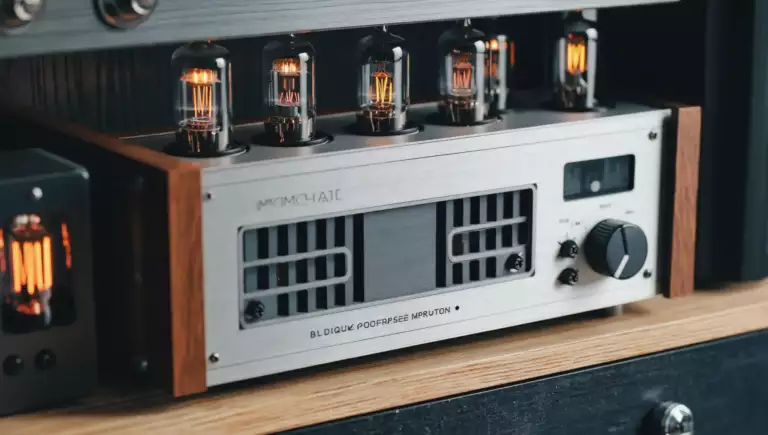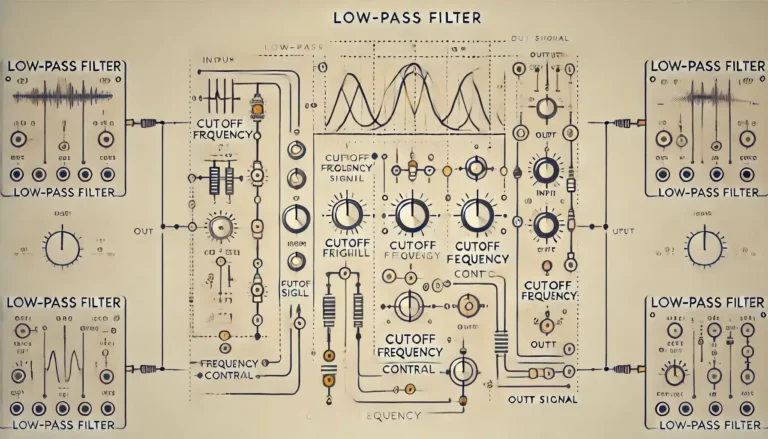Psytrance, or psychedelic trance, is an intricate and immersive subgenre of electronic dance music. Its hallmark is the combination of fast tempos, layered melodies, and deep, driving rhythms. One essential tool in achieving the distinctive sound of psytrance is the high pass filter. This article explores the significance of high pass filters in psytrance production, highlighting their technical functions, creative uses, and practical tips.
What is a High Pass Filter?
A high pass filter (HPF) allows frequencies above a specific cutoff point to pass while reducing the amplitude of frequencies below that point. This fundamental tool in audio processing is crucial for various aspects of sound design, mixing, and mastering.
Key Features of High Pass Filters
- Cutoff Frequency: The frequency at which the filter begins to attenuate the lower frequencies.
- Resonance (Q Factor): Emphasizes frequencies around the cutoff point, adding a distinct character to the sound.
- Slope: Determines how steeply the filter attenuates frequencies below the cutoff. Common slopes are 12dB/octave, 24dB/octave, etc.
The Function of High Pass Filters in Psytrance
High pass filters play a vital role in psytrance production, aiding in sound shaping, dynamic modulation, and frequency management. Here’s how they contribute to the genre’s unique sound:
Sound Design and Shaping
- Percussive Clarity: High pass filters are often used on percussive elements to remove low-end muddiness, ensuring that each hit is clean and sharp. This is crucial for creating the punchy, driving rhythms characteristic of psytrance.
- Bright Synths: For leads and arpeggios, high pass filters help maintain brightness and presence by cutting out unnecessary low frequencies. This keeps the high-frequency elements crisp and clear.
Adding Dynamic Movement
- Sweeping Effects: A popular technique in psytrance is sweeping the cutoff frequency of a high pass filter. This creates dynamic changes and builds tension, essential for maintaining energy and interest in the track.
- Filter Automation: Automating high pass filters can bring static sounds to life. By modulating the cutoff frequency with an LFO or envelope, you can add rhythmic movement that syncs with the track’s tempo.
Frequency Management
- Mix Clarity: High pass filters are indispensable for cleaning up the mix. By removing low frequencies from elements that don’t need them, you reduce muddiness and ensure each sound has its own space.
- Transition Effects: During transitions, high pass filters can create dramatic effects. Slowly raising the cutoff frequency can make a sound feel like it’s thinning out, adding anticipation before a drop.
Techniques for Effective High Pass Filter Use
To harness the power of high pass filters in psytrance production, consider these techniques:
Dynamic Cutoff Modulation
- Envelope Control: Use an envelope follower to dynamically adjust the cutoff frequency based on the input signal’s amplitude. This can create interactive and expressive filter effects.
- LFO Modulation: Applying an LFO to the cutoff frequency introduces periodic modulation. Experiment with different waveforms and rates to find the right rhythmic effect.
Enhancing Percussion
- Starting with Noise: Begin with a noise generator and use a high pass filter to sculpt percussive sounds. Adjust the cutoff and resonance to achieve a tight, punchy result.
- Layering Sounds: Combine layers of percussive elements, each with its own high pass filter settings. This adds depth and complexity, making the percussion more engaging.
Crafting Leads and Arpeggios
- Snappy Envelopes: Apply filter envelopes to shape the attack, decay, sustain, and release of your sounds. This technique is especially effective for lead synths, adding energy and definition.
- Resonance Adjustments: Fine-tune the resonance to highlight specific harmonics and add unique character. Be cautious with high resonance settings, as they can make the sound harsh.
Building Transitions
- Automating Cutoff: Use automation to control the cutoff frequency during transitions. Gradually raising the cutoff frequency creates anticipation, which can be released when the filter drops back down.
- Effect Combinations: Pair high pass filters with other effects like reverb and delay. Filtering the reverb tail can create a sense of space and depth, enhancing transitions.
Practical Applications in Psytrance Tracks
To illustrate high pass filters’ practical uses in psytrance, let’s outline a hypothetical track:
Intro and Build-Up
- Atmospheric Pads: Begin with pads filtered through a high pass filter, creating a light, airy texture. Gradually lower the cutoff frequency to add more body as the track progresses.
- Percussion: Introduce percussive elements with high pass filtering to emphasize their clarity and detail, without overwhelming the mix.
Main Section
- Bassline and Kick: Ensure the bassline and kick remain powerful by using high pass filters on other elements to clear out unnecessary low frequencies.
- Leads and Arpeggios: Use dynamic filter modulation on lead synths and arpeggios to create evolving melodies and maintain listener interest.
Breakdown
- Filter Sweeps: Apply sweeping high pass filters to create a sense of breakdown and anticipation. Gradually raise the cutoff frequency on the master bus for a cohesive effect.
- Filtered Effects: Use high pass filters on reverb and delay tails to create smooth transitions without excessive low-end buildup.
Drop
- Full Impact: When the drop hits, reduce high pass filtering to allow the full frequency spectrum through, creating a powerful impact.
- Balancing Bass and Leads: Use high pass filters to ensure bass and leads interact harmoniously. Attenuate low frequencies on leads to make room for the bass.
Conclusion
High pass filters are essential in psytrance production, offering a range of creative and practical applications. From shaping sounds and adding dynamic movement to managing frequencies and crafting transitions, high pass filters are key to achieving the genre’s signature sound. By mastering the techniques and tips discussed in this article, producers can fully exploit high pass filters’ potential to elevate their psytrance tracks.
Effective use of high pass filters requires both technical knowledge and creative experimentation. As with any tool, the goal is to use them musically and purposefully, ensuring they enhance the overall composition. Whether you’re an experienced psytrance producer or just beginning, understanding and utilizing high pass filters can unlock new sonic possibilities and help you create engaging and immersive tracks.


